May 2024
I am on a tour, so the trip to Annapolis was brief, which is a shame because driving through Annapolis, it looked very intriguing; I will have to return one day.
The Naval Academy
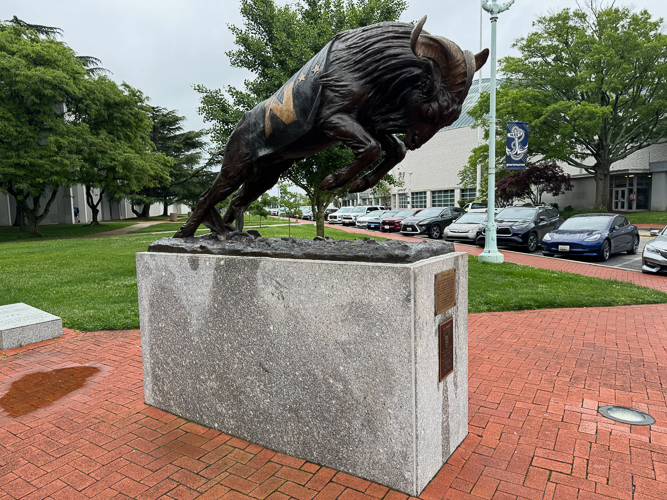
Bill the Goat – Navy’s Mascot
Why a goat? There is a legend that a Navy ship once sailed with a pet goat and that the goat died during the cruise. The officers preserved the skin, intending to mount it when they returned to port. Two young ensigns were entrusted with the skin. On their way to the taxidermist, they stopped by the United States Naval Academy to watch a football game. At halftime, for reasons the legend does not specify, one ensign decided to dress up in the goat skin. The crowd appreciated the effort, and Navy won the game. At games today, the mascot is represented by a live goat and also by a costumed midshipman.
We were on a guided tour, and I can not recommend it enough. The information imparted is fascinating, not just about the buildings but about the life and history of the Naval Academy itself.
The Academy’s grounds are not called a campus but a Yard. The Academy was started in 1845 and is set on 338 acres on the south bank of the Severn River.
Approximately 4,400 men and women, known as midshipmen, represent every state in the U.S. and several foreign countries.
The nearly 600-member Naval Academy faculty comprises approximately equal numbers of military and civilian instructors. The student-faculty ratio is 8:1, with most class sizes ranging from 10 to 22 students.
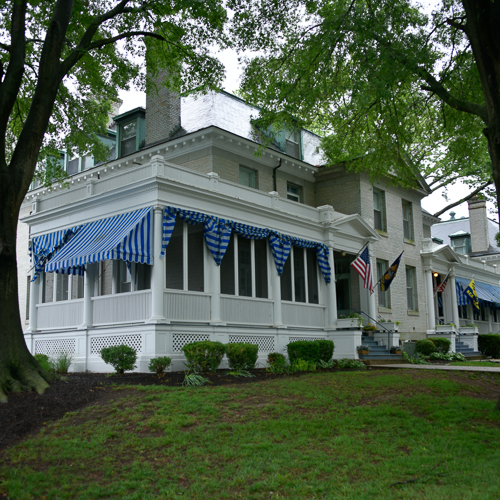
Captains Row. The houses were designed by New York architect Ernest Flagg and built in the early 1900s
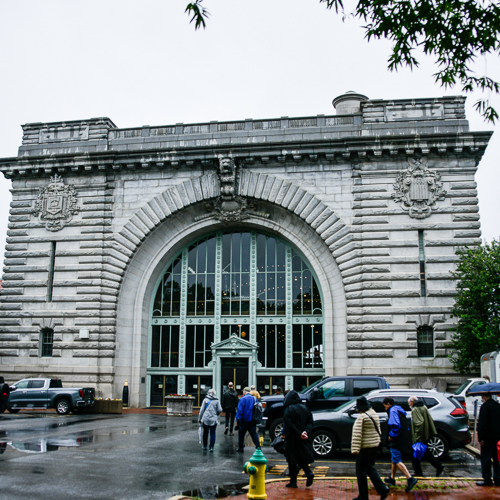
Dahlgren Hall
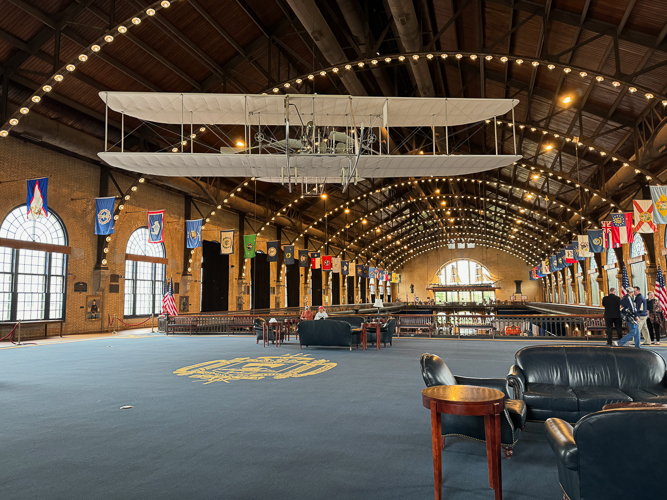
The inside of Dahlgren Hall
Dahlgren Hall was built in 1903. It originally served as an armory after the Civil War, as an ice rink, and now as an all-purpose building. As you can see, it also houses a perfect, full-sized replica of the Wright brothers’ early naval aircraft suspended from the ceiling.
Why the replica? Well, of course, there are naval pilots, but what I did not know is that the US Military bought the specifications for the plane from the Wright brothers. It took years for the Wright brothers to sell their plans for a military aircraft to the Army. The Army had purchased several pigs in a poke from other inventors, and since the Wright brothers protected their technology in such a way the Army was wary about them, too.
It took four years of talks between the two groups before a deal was struck in 1909. The Board of Ordnance and Fortification and the U.S. Signal Corps sent a request for bids, designed to make the Wright brothers the only feasible bidders for flight trials. The specification stipulated that if their plane passed specific requirements, the brothers would get $25,000 (now equivalent to about $750,000). If they surpassed the 40 miles per hour mark, they would also earn a bonus. The brothers’ flight averaged 42.5 miles per hour, so they ultimately brought home $30,000 ($900,000 today).
The replica of the 1911 plane was placed in Dahlgren Hall in 2006 to showcase the Navy’s role in aviation history.
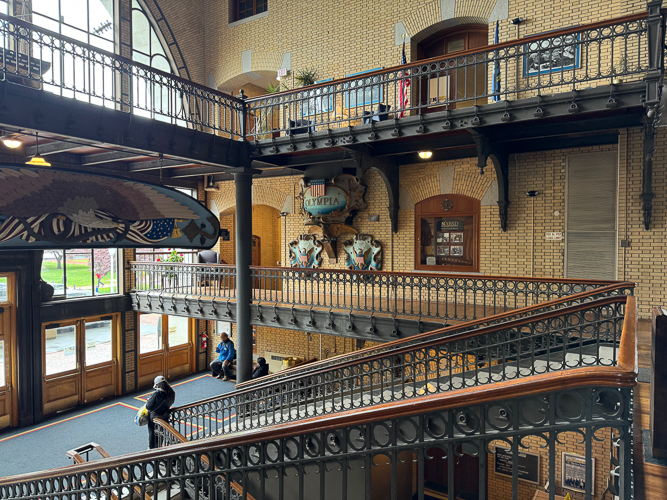
The entry area and the stunning wrought iron of Dahlgren Hall
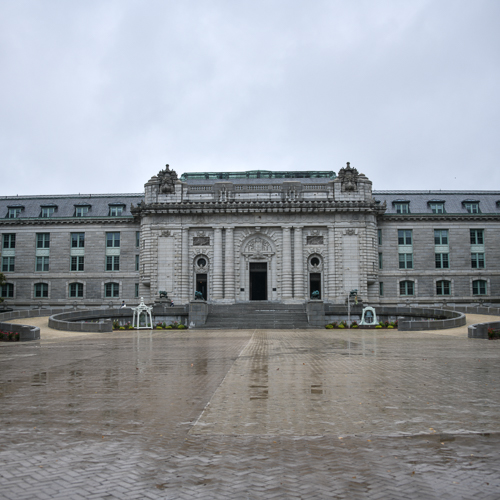
Bancroft Hall
You can not possibly capture the scope of Bancroft Hall’s exterior in one photograph. In fact, Bancroft Hall is said to be the largest contiguous set of academic dormitories in the U.S.
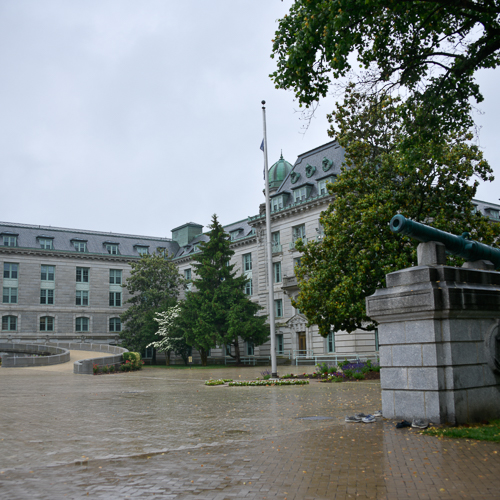
One wing of Bancroft Hall
Bancroft Hall was also designed by Ernest Flagg in the Beaux-Arts style with its mansard roof and dormer windows. Its central rotunda and first two wings were built in 1901–06. Over the intervening years, it has been expanded to encompass eight wings of five stories (“decks”), each numbered 0–4. The original two wings (1906) are now the 3rd and 4th wings; the next pair, added in 1917, are now the 1st and 2nd wings; a pair added in 1939 became the 5th and 6th wings; and a final pair was added in 1961 as the 7th and 8th wings. The 3rd wing was built over the remains of the old Fort Severn.
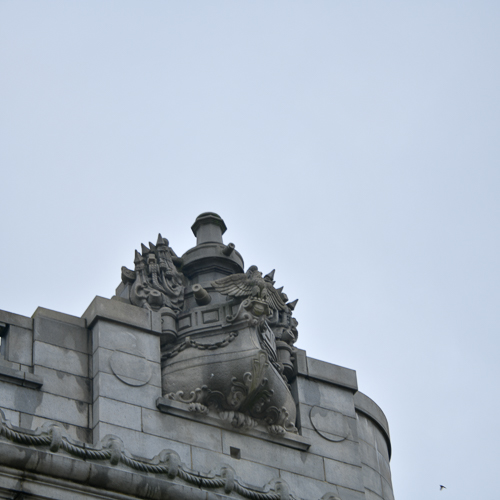
Exterior ornamentation of Bancroft Hall
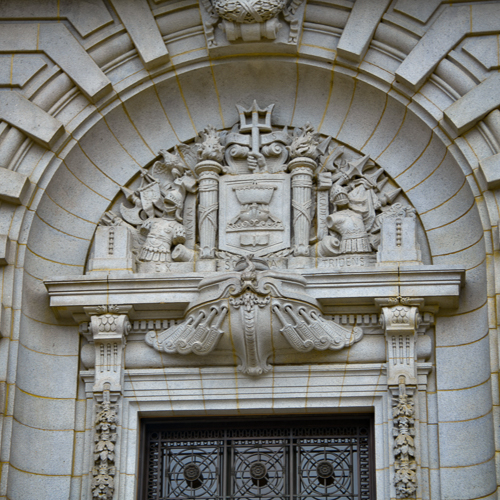
Ornamentation over the front door
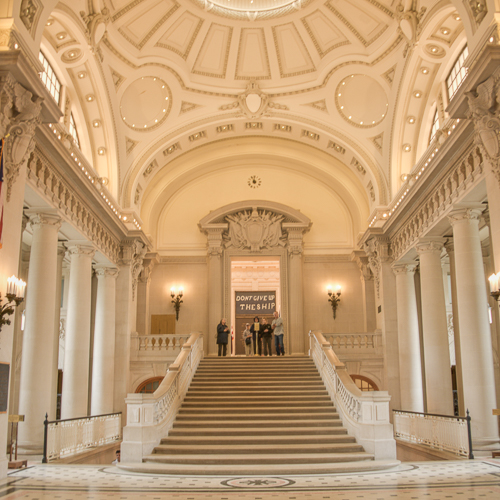
As you walk into Bancroft Hall, showing the steps leading to Memorial Hall.
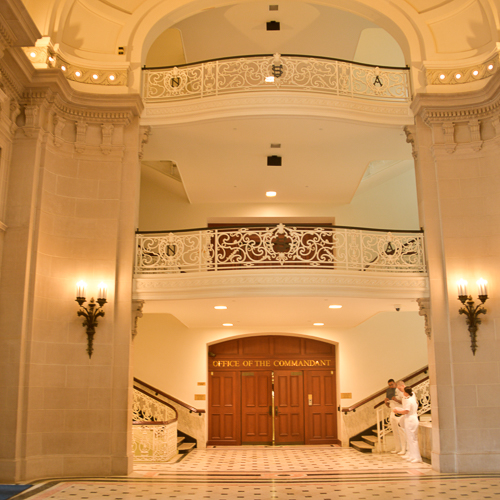
Looking to the left while standing in the entry
This is just a ridiculously small showing of the Yard. Sadly, the Chapel, one of the Naval Academy’s more spectacular buildings, was closed.
Hammond Harwood House Museum
The Hammond Harwood House was built in 1774 and is one of the premier colonial houses remaining in America from the British colonial period (1607–1776). The architect William Buckland designed the house for wealthy farmer Matthias Hammond. It is the only existing work of colonial academic architecture that was principally designed from a plate in Andrea Palladio’s I Quattro Libri dell’Architettura (The Four Books of Architecture) (1570). It was modeled on the design of the Villa Pisani in Montagnana, Italy, as depicted in Book II, Chapter XIV of Palladio’s work.

This photo is from Wikipedia, as the house is too large for a regular camera to capture.
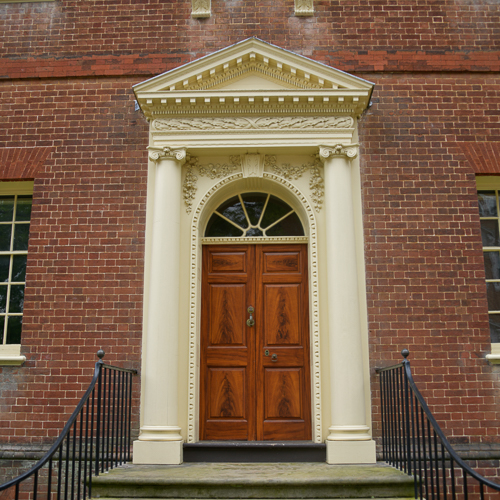
The front door of the Hammond Harwood House with its faux painted wood grain and carvings by Thomas Hall, an indentured artisan from England in service to the architect.

George Washington clock in the Hammond Harwood House Ballroom
This clock has a fascinating history.